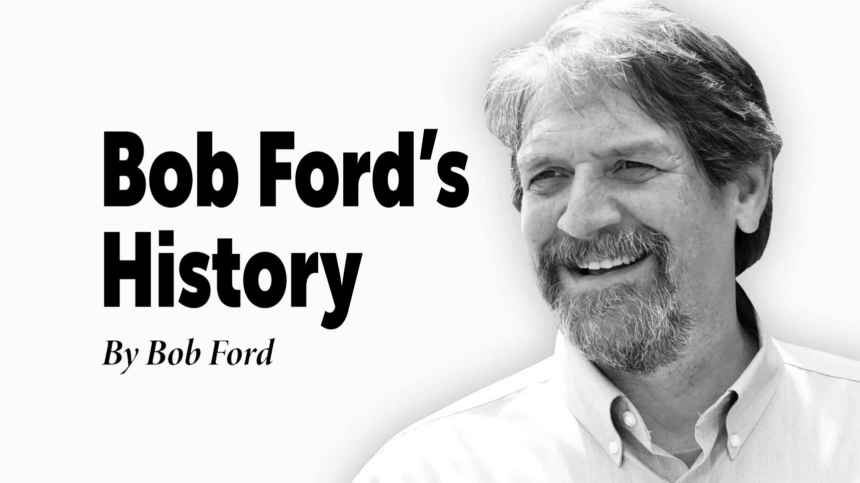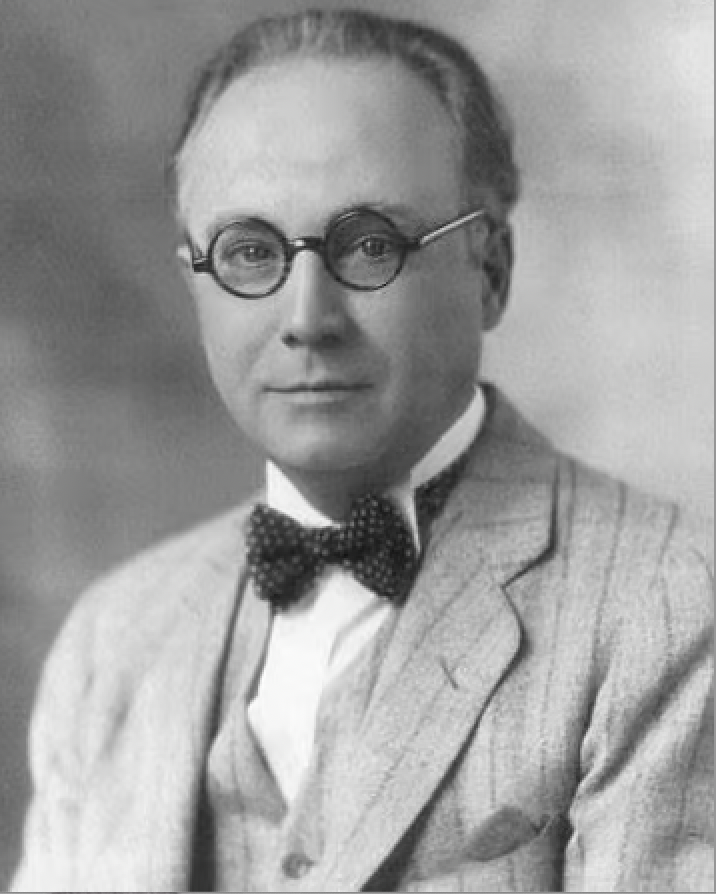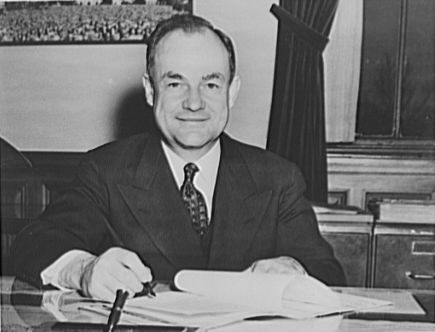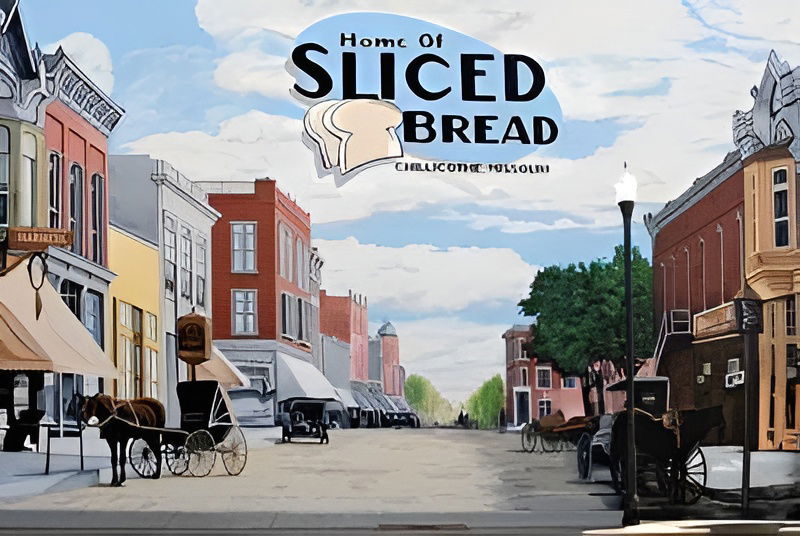Leave it to our government to outlaw sliced bread




If you love history, we are seeking sponsors and or contributors to support this column. Contact Bob at robertmford@aol.com for details and/or contribute via Venmo @bobfordshistory.
You’ve heard it all your life ... "the best thing since sliced bread.”
The invention of the bread slicer was a life changer and Chillicothe, Missouri’s, claim to fame.
But what in the world would cause the U.S. government to prohibit the sale of sliced bread? The answer was World War II.
Claude F. Wickford, secretary of agriculture and head of the War Food Administration, gave the order on Jan. 18, 1943:
“Henceforth the sale of sliced bread will be banned in the United States of America.”
Women throughout the country were furious!
The sacrifices made on the homefront during the war were immense. Normal living was put on hold as “all out war” meant everyone had to do their part, whether it was working a man’s job, volunteering towards the war effort or dealing with shortages of most everything … but sliced bread?
Otto Rohwedder had been developing a commercial bread slicer for decades. Through fire, injury and financial strife, he introduced the innovation in 1928 that honored Chillicothe and changed the kitchen. It took the baking industry by storm.
By 1930, Continental Baking’s sliced Wonder Bread, you know, “Builds Strong Bodies in 8 Ways,” cornered the market.
People had been slicing, tearing and biting into loaves for millennia since wheat was milled into flour and baked.
Pop-up toasters soon became the rage, slices were uniform and could always fit right in ... but hold on.
Secretary Wickford, with his infinite wisdom, thought the steel used to manufacture the slicer and wax wrapping paper needed to keep the bread fresh would be better used in the war effort.
Households revolted, New York City mayor Fiorello La Guardia, obviously listening to his incensed wife Marie, announced he would not enforce the ban. Across the country women were forced to pull out their grandmother’s serrated knives and begrudgingly saw into fresh loaves.
So much for your new pop-up toaster if your bread wasn't perfectly sliced. Burnt toast, time wasted and frustration left many a housewife with bloody fingers and a dull weapon in her hand, cursing at Wickford.
Essential raw materials were in demand by our allies: coal, tin, wood, oil, rubber and sugar are just a few of what people had to live without. Many everyday items made the ration list too: steel, meat, dairy, coffee and interestingly shoes.
Even in 1939 and 1940 before the United States entered the conflict, our government started gearing up, knowing war was inevitable.
France fell to the Nazi’s in '40, leaving a depleted England in the West and Russia to the East as the last European powers to try and slow Hitler.
Churchill and Stalin pressed the United States for desperately needed help. Many in the United States didn’t want to become involved in another European war, the last one was devastating.
Roosevelt knew the country’s military wasn’t ready, but our vast industrial base was.
The Lend-Lease Act of March 1941 allowed the U.S. to become the “arsenal of democracy,” supplying allies with much needed military equipment, food and munitions. A provision in the act allowed allies to pay the U.S. back, “as they could,” because in the long run as the president knew, these supplies were actually for the defense of the United States.
In all, $50 billion worth of supplies went out, that’s $700 billion in today’s dollars. Aircraft, ships, tanks, trucks and weapons were shipped overseas in convoys, dodging German subs in the North Atlantic. Under the agreement after the war, United States equipment was to be returned if not destroyed.
Protein-packed Spam itself was introduced to the world in 1937. At its height, the U.S. military purchased 15 million cans of the Hormel product per week. Even though the delicacy was much maligned as “Spam, the ham that couldn’t pass its physical!” Russian Gen. Nikita Khrushchev credited the “canned ham” with saving his fighting men on the battlefield from starving to death.
Back on the homefront, after Pearl Harbor, rationing became a way of life. Rationing coupons looked much like S&H Green Stamps, remember? Victory Gardens sprung up everywhere with old time bartering making a comeback. Every household item was subject to shortages, which of course spawned black markets.
Women would use eyeliner down the back of their legs, mimicking the look of nylons. Generations of families moved in with one another to save on costs and products, including mine. Everyone went without, you understood, except for that sliced bread thing?
After the war, products slowly came off the ration list. Sugar was the last item pulled in 1947, sweetly used in explosives manufacturing.
Only two months after being imposed, the restriction on sliced bread was rescinded. Who knew what went on at the Wickford household, but one of his directors on the Food Administration Board was caught in a sliced bread black market ring, no kidding! Sliced bread was the only product to get a reprieve off the restricted list in the middle of the war.
Mister Secretary, as politicians do, didn’t admit a mistake in lifting the ban.
"The restriction didn’t save as much as expected and the country has plenty of wax paper.”
He caved, bakers were happy, housewives put away their knives and finally, harmony on the homefront. From there, we of course, went on to win the war!
————————————-
Bob Ford’s History will appear in each edition of the Midweek, Weekender and Corner Post. You can find more of Bob’s work on his website bobfordshistory.com and videos on YouTube, TikTok and Clapper.



